Certainly the most important Valsesian painter of the seventeenth century is Antonio d’Enrico, better known as Tanzio da Varallo (Alagna Valsesia, c. 1582 - Borgosesia?, 1633), an artist who was strongly influenced by the art of Caravaggio and the Caravaggesque painters, but who added to this baggage his own inclination toward Lombard-Piedmontese Second Mannerism, whose exponents were Camillo Procaccini, Cerano, and Morazzone. An entire hall within the Pinacoteca in Varallo, the second largest town in the province of Vercelli, located in Valsesia, is dedicated to Tanzio. But in addition to his works, those of Gaudenzio Ferrari who preceded him and other artists, painters and sculptors, who worked in the area over the centuries, Palazzo dei Musei houses a collection that tells the story of the variety of the local artistic tradition and is useful for understanding how heterogeneous it has been through the centuries. It is a journey from the fifteenth to the twentieth century that the visitor takes in three rooms in which paintings, sculptures, decorative arts objects, liturgical furnishings and furniture follow one another.
The collection has one hundred and five pieces and was donated to Palazzo dei Musei by borgosesian physician Mario Remogna between 2002 and 2013. The donation to the museum and to the institution of which the latter is still president (the Society of Encouragement to the Study of Drawing and Conservation of Works of Art in Valsesia - Onlus) is testimony to patronage and love for culture. The prestige of the Pinacoteca di Varallo, as well as the richness of its collections, led the doctor to leave to the Varallo institution the art-historical legacy collected with passion by his father, Giovanni Remogna, also a doctor. The first nucleus of the collection was donated in 2002 and includes a wooden sculpture and three paintings: the Madonna and Child in Mandorla and Christ in Pieta both from the second half of the 15th century, referring to anonymous artists of Lombard-Piedmontese culture, the canvas with St. Francis of Assisi praying on La Verna (c. 1613-1614) by Tanzio da Varallo, and the Roggia sotto il Sassello (1885) by the Valsesian painter Pier Celestino Gilardi. This first donation was completed in several stages until 2013, leading to the arrival at the museum of the entire collection, set up in three rooms inaugurated in 2015 and part of the permanent exhibition itinerary of Palazzo dei Musei.
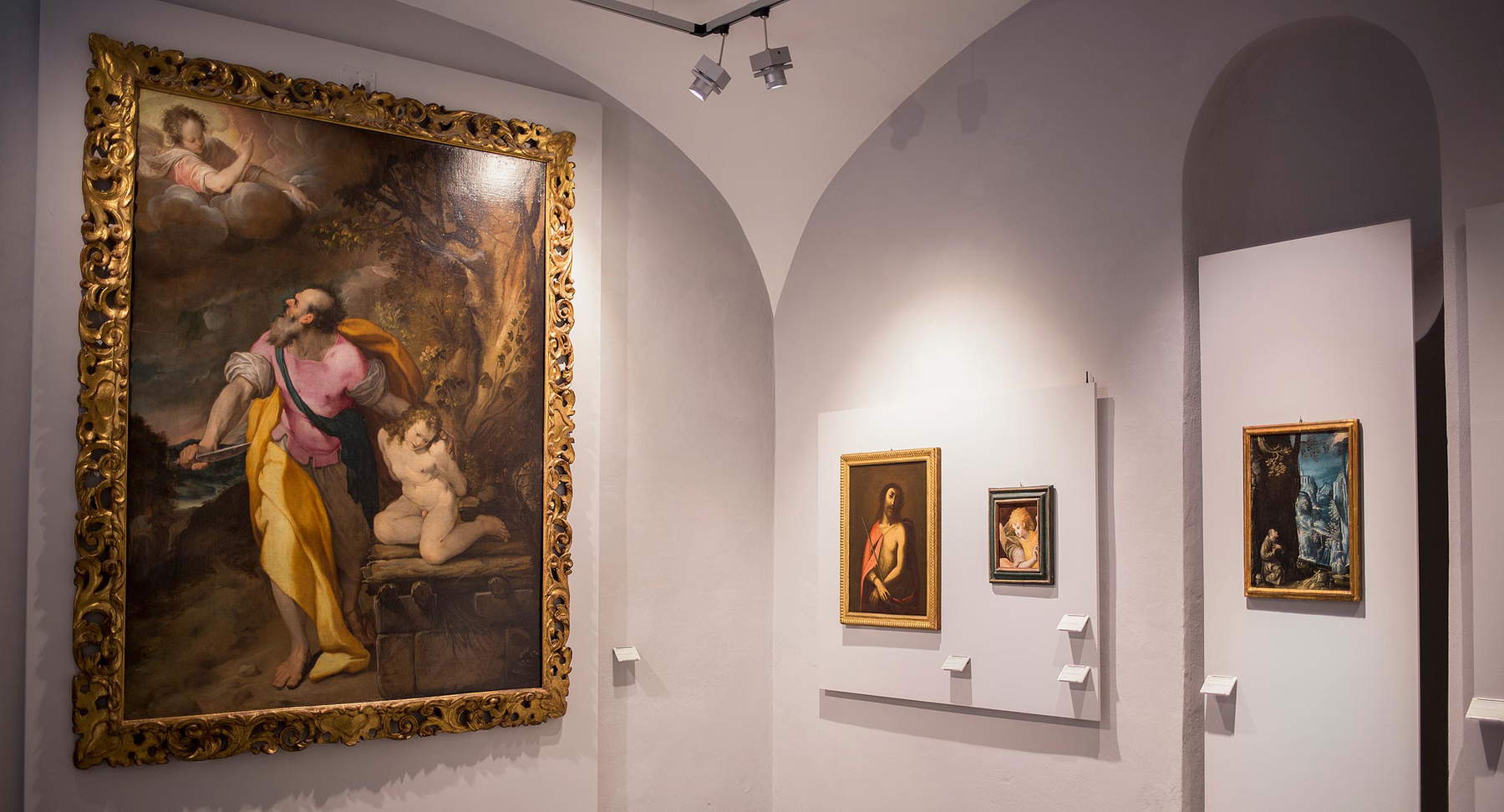 |
| Varallo Picture Gallery Hall |
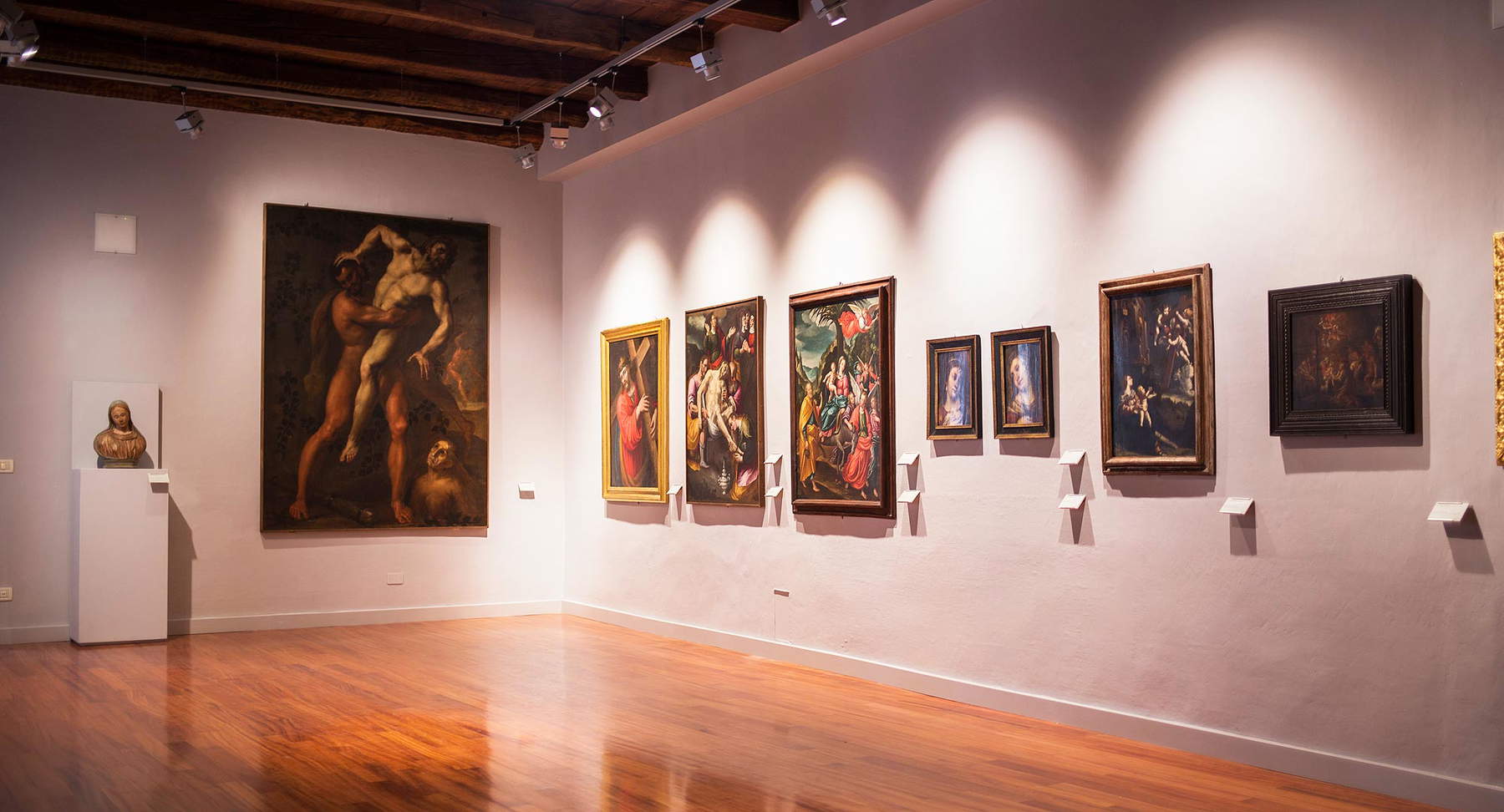 |
| Varallo Picture Gallery Hall |
A native of Crevacuore, in the province of Biella, Giovanni Remogna began collecting these works in the 1920s and in particular focused on pieces between the seventeenth and nineteenth centuries: in choosing which works to purchase, he was guided by his personal taste. It seems that his passion for art originated in Florence, a city he frequented as a young man during his time as a medical officer. After moving to Valsesia, Giovanni Remogna knew how to identify the most valuable works that his patients owned in their homes and purchased them from them: these are probably works that originally belonged to churches or were related to private devotion, or arrived at Valsesian families as a result of inheritances or purchases from artists. Six paintings, on the other hand, were purchased from the Billotti sisters, residents of Genoa but of Biella origin, and can be traced to the Milanese market.
The works in the Remogna collection, both those from the Valsesia area and those that cross the borders of this territory, dialogue closely with the Pinacoteca’s holdings, with a predilection for Lombard-Piedmontese artistic culture.
Among the most prestigious works in the collection are paintings by Camillo Procaccini, Guglielmo Caccia known as Moncalvo, Gian Giacomo Inchiocco known as Barbelli, Giambettino Cignaroli and Pier Celestino Gilardi.
To Camillo Procaccini (Parma, 1561 - Milan, 1629) are referred the Sacrifice of Isaac and the Massacre of the Innocents: both were purchased by the collector from the Billotti sisters and had previously belonged to the Milanese restorer Nicodemi. The artist executed the Sacrifice of Isaac between about 1585 and 1590, straddling his last works in Emilia and his beginnings in Lombardy: the painting denotes a combination of the late Mannerism of his training and an unprecedented observation of the real, influenced perhaps by the suggestion exerted on the painter by the early works of Annibale Carracci and by his frequentation of the Bolognese scientist Ulisse Aldrovandi. In the large canvas, a compositional similarity has been captured with the Creation of Eve frescoed in the cycle in the Basilica of San Prospero in Reggio Emilia, which Procaccini painted between 1585 and 1587, at the end of his first Emilian activity. Later, on the other hand, is the Strage degli Innocenti (Massacre of the Innocents), completed with help from the workshop between about 1605 and 1610: this is a replica, though not completely faithful to the original, of the large painting commissioned by the monks of San Sisto in Piacenza and which the painter had executed by 1605. Compared to the Piacenza version, the one in the Remogna collection is characterized by greater violence and expressive power: see the bite that the mother depicted on the right gives to her son’s murderer.
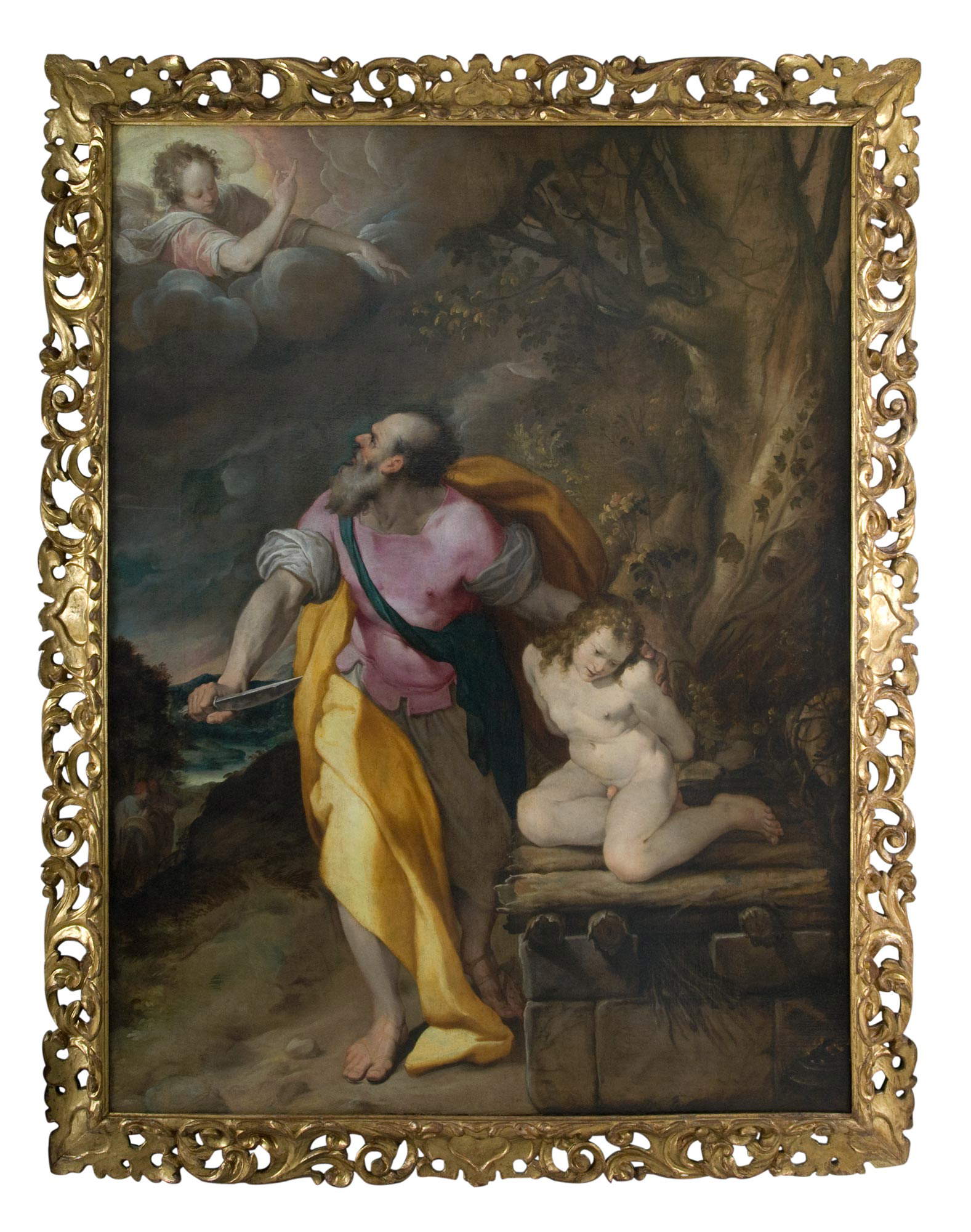 |
| Camillo Procaccini, Sacrifice of Isaac (c. 1585 1590; oil on canvas, 226 x 174 cm; Varallo, Pinacoteca, Remogna Collection) |
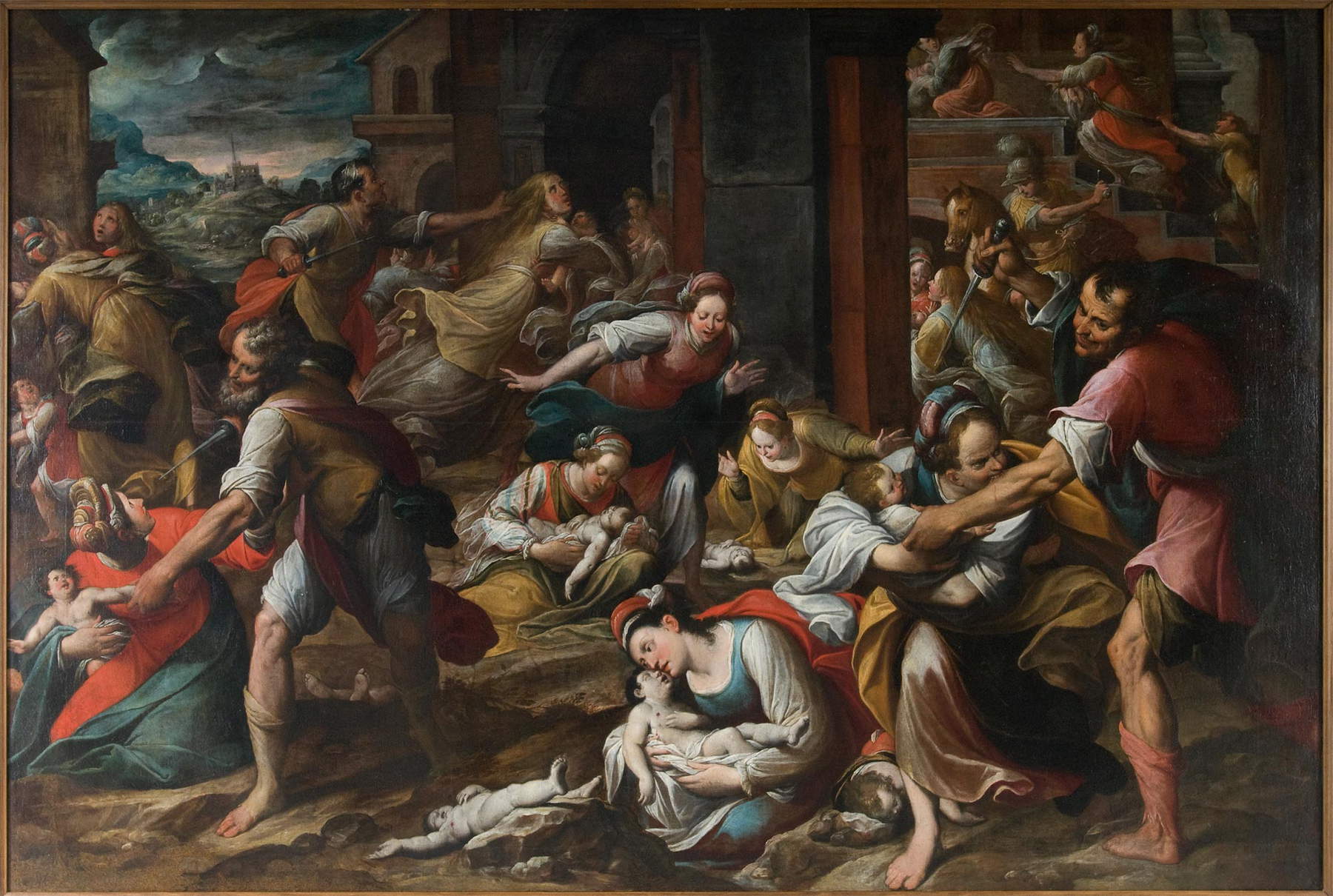 |
| Camillo Procaccini, Massacre of the Innocents (c. 1605 1610; oil on canvas, 145 x 218 cm; Varallo, Pinacoteca, Remogna Collection) |
 |
| Guglielmo Caccia known as Moncalvo, Fall of St. Paul (c. 1605 1610; oil on canvas, 131 x 163 cm; Varallo, Pinacoteca, Remogna Collection) |
 |
| Antonio d’Enrico known as Tanzio da Varallo, Saint Francis of Assisi at Prayer on La Verna (c. 1613 1614; oil on canvas, 55 x 38 cm; Varallo, Pinacoteca, Remogna Collection) |
The Fall of Saint Paul, a work by Moncalvo (Montabone, 1568 - Moncalvo, 1625), is also among the paintings purchased by Giovanni Remogna from the Billotti sisters in Pollone. The work is close to others made by the painter before the end of the first decade of the 17th century, not far from his participation in work on the Great Gallery of Charles Emmanuel I at the Royal Palace of Turin. The Varallan canvas, which corresponds to the lower register of a larger painting, can in fact be dated to between about 1605 and 1610: a group of horsemen appears in the background, painted in very light ochre ground, the basic tone of the canvas, on which the blue of the saint’s armor and the pink of his cloak stand out. A decade later the artist resumed the subject in the work he produced for the church of St. Paul the Apostle in Casale Monferrato.
Giovanni Remogna purchased Tanzio da Varallo ’s Saint Francis of Assisi at Prayer on La Verna in the 1960s. The painting depicts the saint’s waiting for the heavenly vision on Mount Verna, or the moment before the stigmatization of St. Francis. The seraphim angel is announced by the glow seen in the upper right corner, which causes fright in Brother Leo. According to critical interpretations, the wait gives the painter an opportunity to work on the landscape, giving it a sense of the sublime and impervious, thanks to the gray-blue color of the rocks. Also depicted within the view are two friars who are walking toward the shrine that will be built in memory of the miracle but which at the time of the stigmatization had not yet been erected. Given Tanzio da Varallo’s deep spirituality, it is possible that he personally visited the Verna shrine.
The Portrait of Alessandro Zanchi is painted by the Cremasque artist Gian Giacomo Inchiocco known as Barbelli (Offanengo, 1604 - Calcinato, 1656) between about 1646 and 1656. Crucial to the identification of the male figure depicted was the inscription on the document hanging behind the man: he is the Bergamasque knight Alessandro Zanchi; the coat of arms above the document attests to the lineage of the elderly military man. In those years Barbelli intensified his contacts with the city of Bergamo, where he worked on the decoration of Palazzo Moroni between 1649 and 1654, and the little biographical information available on Zanchi suggests that the latter may have come into contact with the painter when he held the position of governor of the Po city. The cross he wears on his tunic indicates his title of Knight of Malta, while a battle scene can be glimpsed in the background.
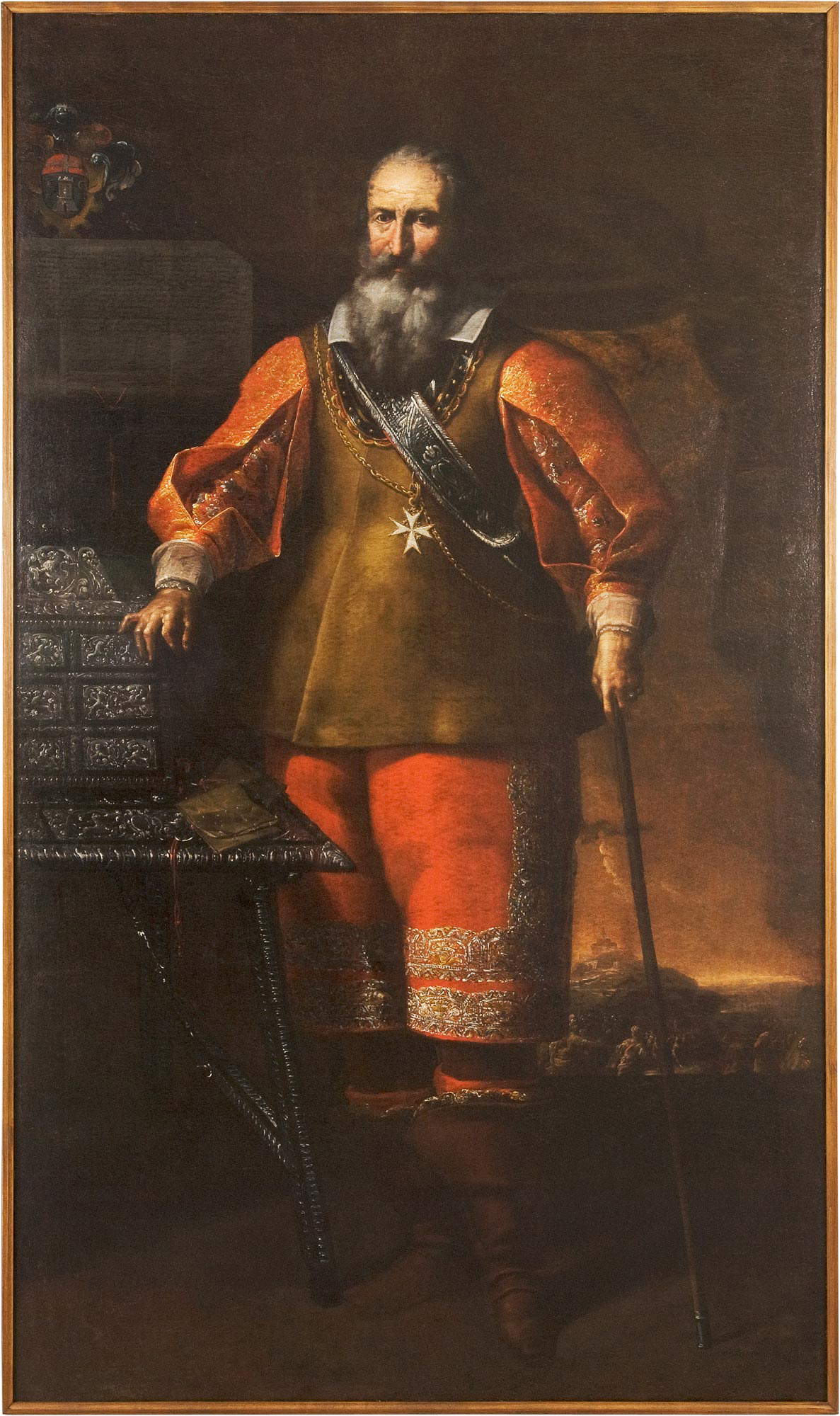 |
| Gian Giacomo Inchiocco called Barbelli, Portrait of Alessandro Zanchi (c. 1646 1656; oil on canvas, 235 x 138 cm; Varallo, Pinacoteca, Remogna Collection) |
 |
| Giambettino Cignaroli, Madonna and Child Enthroned, Saint John the Baptist and Saint Zeno the Bishop Assisted by a Cleric (1732; oil on canvas, 249 x 140 cm; Varallo, Pinacoteca, Remogna Collection) |
 |
| Pier Celestino Gilardi, View of Monte Rosa at the End of the Sesia Valley (c. 1892; oil on canvas, 36 x 48.5 cm; Varallo, Pinacoteca, Remogna Collection) |
The Madonna and Child Enthroned, St. John the Baptist and St. Zeno the Bishop Assisted by a Cleric made by Giambettino Cignaroli (Verona, 1706 - 1770) is eighteenth-century. It was bequeathed to Giovanni Remogna in his will by insurer and his patient Cesare Corti. The composition is built according to the scheme of the sacred conversation, with the Virgin and Child on the throne and the remaining figures arranged on a lower plane. The teenage Baptist is clad only in the red cloak (the camel skin is barely visible), Saint Zeno is seated in pontifical robes reading the sacred text, and the cleric on the right is the only one who turns his gaze to the viewer. The Child’s white tunic already foreshadows the theme of the Passion and he himself holds the scroll of theAgnus Dei, while the Virgin rests her hand on the Child’s shoulder to consciously accompany him to his death.
Of a totally different subject from the paintings mentioned so far, since it is landscape, is the View of Monte Rosa at the end of the Sesia Valley executed by the Valsesian Pier Celestino Gilardi (Campertogno, 1837 - Borgosesia, 1905). The work depicts Monte Rosa with the villages of Alagna and Riva Valdobbia plausibly taken from a viewpoint between the peaks of Alzarella and Cona. The painter knew these places very well because of his proximity to Campertogno, his native village, where he owned a family home and where he often returned from Turin. He also had many opportunities for contact with the Italian Alpine Club, which promoted painting at high altitudes.
Getting to know the Remogna collection is an opportunity to understand the local artistic tradition, but also for a broader journey, outside the borders of Valsesia, that everyone can make thanks to the great gesture of sharing that the donor has chosen for this collection.
Warning: the translation into English of the original Italian article was created using automatic tools. We undertake to review all articles, but we do not guarantee the total absence of inaccuracies in the translation due to the program. You can find the original by clicking on the ITA button. If you find any mistake,please contact us.